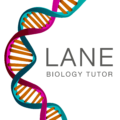Download the pdf. worksheets below and read these explanations regarding common student misconceptions.The topics include:
- Photosynthesis
- Leaves
- Transport in Plants
- Water Uptake & Transpiration
Photosynthesis
Plants can photosynthesise and respire at the same time. Some of the oxygen produced from photosynthesis is used by the plant cells for respiration.
Photosynthesis does not just occur in plants. Some algae and bacteria can also photosynthesise. And why don´t you Google the sea slug (Elysia timida). It steals chloroplasts from its algal food and uses them to photosynthesise and produce more food for itself!
Photosynthesis does not just occur in the leaves. It occurs wherever there are green parts in the plant like the stem and branches.
Photosynthesis starts most food chains in the oceans which is carried out by phytoplankton. Phytoplankton actually contributes around 50% of the oxygen in the Earth´s atmosphere.
Plants grow bigger by cell division and cell elongation.
Plant Transport
Plants transport their sugars as sucrose and not glucose. Sucrose is a disaccharide made from fructose and glucose. Plants transport sucrose as it contains more energy so is more efficient transport.
Dissolved ions like nitrates in the soil pass into the root hair cells along with water by diffusion. But when there is a higher concentration of ions inside the plant cells they can actively transport more against the concentration gradient using energy.
Plants get their food from the soil is incorrect. They get their energy carbohydrate energy from photosynthesis and the mineral ions from the soil are used to make proteins and allow their enzymes to function well.
Transpiration
Plants can open and close their stomata to restrict water loss. They may close their stomata during sunlight hours because they have lost too much water. This means photosynthesis will be reduced due to less carbon dioxide passing through the stomata but this is a trade off the plant will do when necessary.
Plants root cells absorb water by osmosis. Plant leaves lose water by evaporation and then diffusion known collectively as transpiration. The water vapour evaporates out of the leaf cells into the air spaces of the spongy mesophyll and then diffuses out the stomata due to the concentration gradient.
Water moves up the xylem not by diffusion or osmosis but from the force pulling the water up. This force is generated by the negative pressure in the upper parts of the plant due to transpiration. This movement of water throughout the plant is called the transpiration stream.
Plants Worksheets pdf.
Like these GCSE worksheets?
You can purchase the GCSE Bundle 2 pack with this link.
